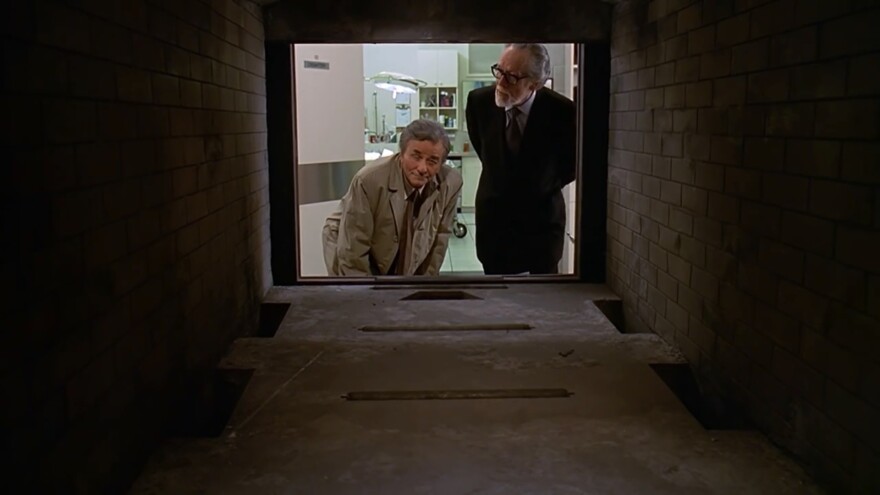Life and death aren’t usually like what you see on television. But a classic detective show got one of our listeners wondering about what really happens when it comes to one method of preparing the remains.
One of the last episodes of “Columbo” aired in 1998, entitled “Ashes to Ashes.”
A funeral director, played by Patrick McGoohan, explains how it all works to Peter Falk’s Columbo.
“Well, a human being is mostly water. A man of your size would probably burn down to about five pounds.”
“Everything would burn in that oven?”
“Of course, there are exceptions. Some things you can’t cremate.”
And that’s exactly what Barb Buser from Medina County wanted to know about.
“I was watching an old ‘Columbo’ episode where the guy was cremated, and he had bullet shrapnel in him. That was one of the things Columbo found in the ashes to figure out who the body was," Buser said. " I was just wondering about cremations and how they handle all these implants that people are getting. What do they do with all those metal parts: hips, and knees, and everything.”
Mitch Planey, a funeral director and embalmer who works in the Kent location of Bissler & Sons, explains.
“That’s never happened to me, and I’ve never heard from any colleagues that anything like that has ever happened. That’s not that far out of the realm of possibility, but I’ve never come across anything like that,” he said.
Planey said there are definitely certain things which are removed from a body before a cremation.
“Pacemakers actually explode during the cremation process, so that's just surgically removed by us," he said. "When it comes to other aspects of it—artificial hip, artificial knee, really anything metal—the majority of the solid metals that are in those items are not completely burnt down to ash.”
Moving magnet
Planey said then comes the process of removing what remains from the remains.
“We go through with a magnet and gather up any metal objects that might be in with the individual's cremated remains," he said. "Some metals that are more of a softer metal will melt away. Oftentimes, in a surgery, they may put a pin or screw in a joint. That's oftentimes what's left. If the person had a recent surgery, oftentimes the physician will close the incision with staples.”
So what happens to the material which doesn’t turn to ash?
“Those items aren't typically reused," he said. "There are some funeral homes who will recycle the metal. If you recycle any metal, however, from an individual you cannot legally gain any type of profit off that. Anything that you bring in from that donation is always donated to an organization or a charity.”
Returning v. recycling
Sometimes, though, he says a family actually asks for the metal items to be removed and returned.
“Personally, I feel like it's kind a feeling that they have that their mother had a knee replacement. ‘Well, that was part of my mother. I want that.’ Sometimes people have back issues and will get a steel rod put in their back. ‘Well, that was part of my father for the last 30 years of his life. I would like to have that,’” Planey said.
And now, as Columbo would always say, “Just one more thing, please.”
“Columbo” fan Buser wants to know who decides whether an individual is cremated?
"We have what's called a Cremation Authorization Form that the legal next of kin is required to sign," Planey said. "We have to get the death certificate signed, as well, by the physician. See, with a burial we can bury the individual without the Death Certificate. But with the finality of cremation, we do have to have that Death Certificate because that's stating that they have no reason to examine the body at all at this point.”
Planey said he hasn’t dealt with a body which was still needed by the authorities. However, he has run into situations where no next of kin can be found, which delays a decision on whether to cremate. Overall, he’s finding that families are more open to the topic compared to when he began his career in the early 2000s. In fact, at his branch of Bissler & Sons, about 60% of their services now involve cremation, which is slightly higher than the national average of 55%.
Copyright 2021 WKSU. To see more, visit WKSU.





